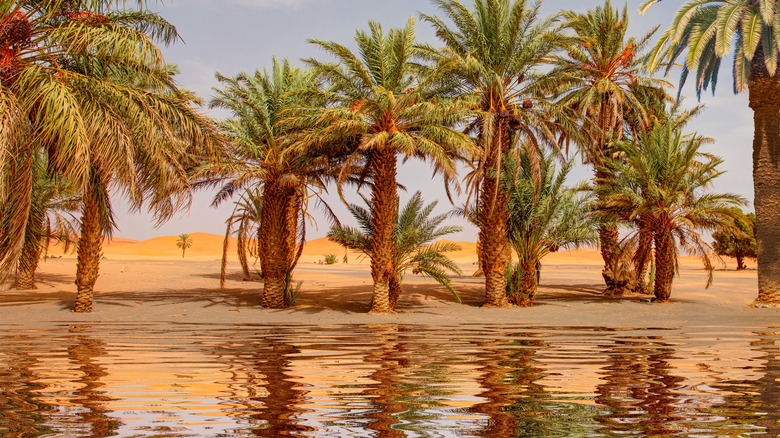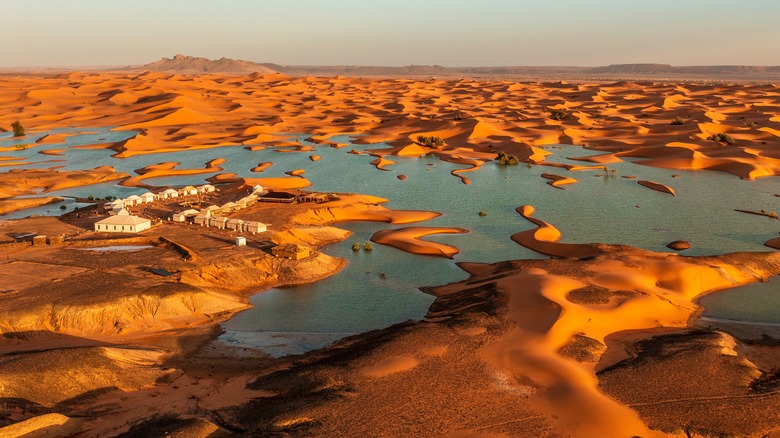
Subtropical deserts are renowned for their sandy landscapes, particularly the Sahara Desert. Although these are some of the hottest regions on Earth, rainfall does occur in deserts. In fact, the average annual rainfall in the Sahara Desert is 0.5 millimeters. While this barren, arid landscape doesn’t receive rain some years, in other years, excessive rainfall leads to flooding.
In September 2024, the northwest part of the Sahara faced flooding when an extratropical cyclone passed through. This extreme weather event resulted in an estimated 200 millimeters of rain in the area, more than the region had received in such a short time span in three to five decades. While it may not seem significant compared to states in the United States that receive up to 71 inches of rain per year (according to Statista), nearly 8 inches of rain over a few days makes a substantial impact when the norm is 0.5 millimeters (or none) for an entire year.
NASA captured the floodwater and runoff that filled typically dry lakes on its Terra satellite. However, such downpours across northwest Algeria, Libya, southeast Morocco, and Tunisia are infrequent. Researchers analyzed weather events across the area over two decades between 2000 and 2021 and found only six instances that resulted in flooding and usually dry lakes filling.
Why the Sahara Desert flooding isn’t always good

You might only recognize the Sahara as one of the driest places on Earth, so seeing lakes and rivers through it can be surprising. However, this desert area hasn’t always been arid. Natural resources of the Sahara Desert included grasslands and forests full of trees around 8,000 years ago (during an African Humid Period), and it was referred to as the Green Sahara. Its transformation into a desert was initiated by changes in Earth’s orbit. With a cycle of humid and dry periods in the Sahara, the current desert phase is estimated to last another 15,000 years.
Meanwhile, research published in Nature Communications based on the devastating floods of Derna, Libya, in September 2023 suggests that flooding poses the greatest threat for deserts. It also highlights the increasing frequency of related weather events due to climate change. Leipzig University climate researcher Karsten Haustein told CNN that climate change might be a factor in the shift of the summer wet zone in the Sahara farther north than usual. According to models, “the Intertropical Convergence Zone, which is the reason for (Africa’s) greening, moves farther north the warmer the world gets,” he said.
Additionally, a study published in Nature Climate Change predicts that extreme weather conditions will continue to shift northward as carbon dioxide levels from fossil fuel pollution rise and Earth warms. More research is needed to determine the extent to which climate change has influenced recent flooding across dry lands, but the increased frequency could signal future devastation.
“`






